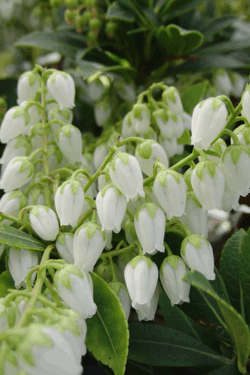The Right Gardening Tool for the Job
by Rosso Gardens on 04/06/12
By Marie Iannotti, About.com Guide
Here's a sampling of garden tools to start filling your toolshed.
- Shovels: Garden shovels have round, pointed blades. They're absolutely necessary for moving soil, digging holes and planting.. Look for one with a flat edge at the top of the blade. It provides a better surface for your foot. Here's a sampling of what to look for in garden shovels.
- Trowels: Most planting will require you get down on your knees with a trowel. Steel blades will last longest. Handle choice is a matter of personal preference. Soft rubber handles are easier on the grip. There are also ergonomic designs that take the stress off of your wrist. A narrow blade is good for digging in solid soil. Wide, rounded blades remove soil faster. You will probably wind up with a couple of different sized trowels in your tool shed. The trowels described in this article are top picks.
- Pruners: Pruning, deadheading and shaping plants goes on all year in the garden. Good pruners will not only make your job easier, it will make a cleaner cut on the plants and not tear or rip. Basically there are 2 types of pruners: anvil and bypass. Get description from preference. Look for pruners with replaceable parts and blades that can be sharpened. Pruners can be costly, so try holding a few different pruners to see what feels comfortable in your hand. These are some of the best by-pass pruners.
- Hoes: Weeds are a fact of gardening life. Hoes can make quick work of weeds. They can also be used to break up soil that isn't to compacted. For strength, look for a rolled steel blade that is riveted to the handle. Smaller blades allow you to get in between plants. Here's a sampling of garden hoes.
- Garden forks: Nothing works as well as a fork to break up soil. Garden forks are slightly shorter and thicker than pitch forks. The strongest have square, rather than flat tines. A garden fork can usually take the place of a spade, if it's the right type of fork. Here are some garden fork examples.
- Rakes: Yard rakes will help you get fall’s leaves
out of your gardens and also collect all your garden debris. Tines
with some spring can be used in the garden without too much damage to
plants. A narrow rake can maneuver around plants easier, but a wide
rake makes quicker work of leaves. As with trowels, many rakes now come
with ergonomic handles that put less stress on your back.
You will also want a heavy metal rake. These are long and straight with teeth about 3" long. They are necessary to smooth out newly tilled garden soil and break up clumps. Take a look at the variety in garden rakes.
- Wheelbarrows & Carts: Toting things
around the garden can really become a chore without the aid of a
wheelbarrow or cart. Plants, soil and compost all have to get to your
garden somehow. The size of your cart will depend on the size of your
garden. While bigger may seem better, don’t get something so large it
becomes to heavy when full for you to move. Some things to look for in a
wheelbarrow are: a stale stance, handles that extend all the way to the
tire, an air filled tire and a deep tray. If you can afford it, o for
the heavy-duty contractor’s model or at least something with a
reinforced undercarriage.
two-wheeled garden carts are becoming more and more popular because the two wheels makes for a more stable ride with heavy loads. Look for large, spoked wheels for a smooth ride. Deep buckets are good for dumping. Flat beds are preferable for shoveling out of the cart. These are some of my favorite wheelbarrows and carts.
- Water cans and Hose: You can’t count on rain.
A good watering can will have a handle that balances in your hand.
Handles that curve from the front of the can to the bottom make it
easier to tilt. Again, large may seem better, but don’t get a can that
is so large you can lift it when full.
When it comes to hoses price is often an indication of quality. Points to compare start with burst strength or how much pressure a hose can handle before it bursts open. 50 pounds per sq. inch is a good strength. The wider the hose, the more water can flow through it. ½ inch is fine, but 5/8 inch is better. Finally there is the material the hose is made from. Rubber will withstand the weather better, but the important thing is that whatever the material,,, it bee reinforced with a mesh layer. Finally, look for one that claims to be kink resistant, to make your life easier. Here are my top picks for hoses, hose reels and watering cans.
Some Suggestions
- Forged tools will cost more, but they are more durable.
- Long handles provide more leverage. Short handles provide ore control, but can be hard on the back.
- Use a steel brush to clean off tools after each use.
- Keep handles from drying by rubbing with linseed oil.
- Sharpen your tools before storing for the winter. Protect with a coat of oil, wax or petroleum jelly
- Check and tighten screws and fasteners often.





